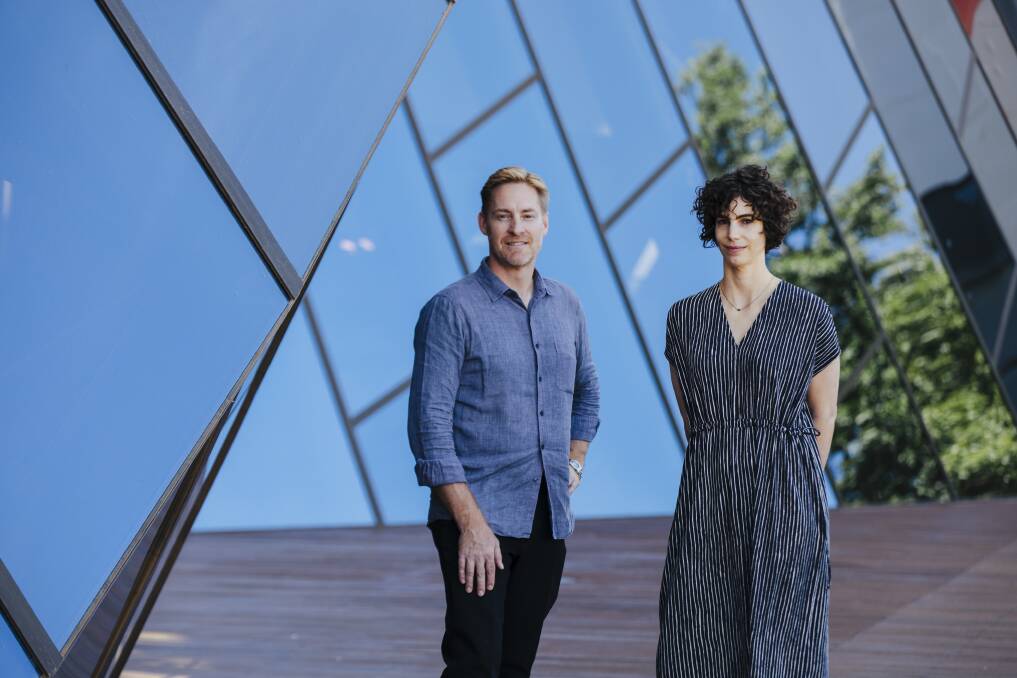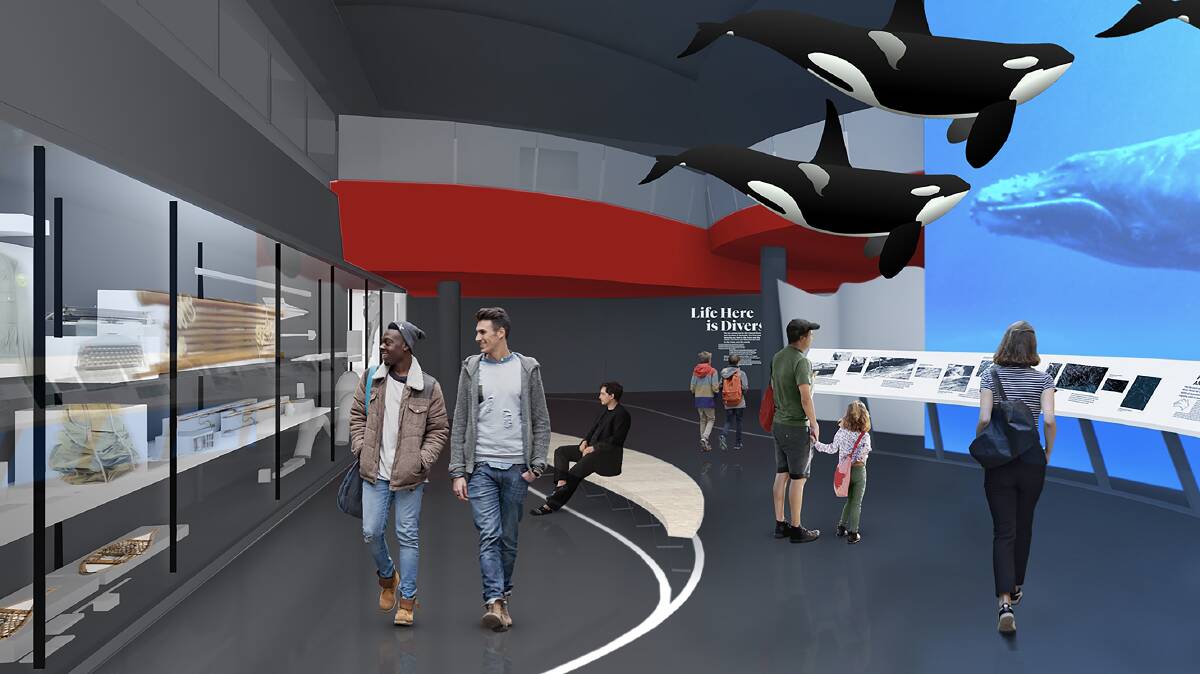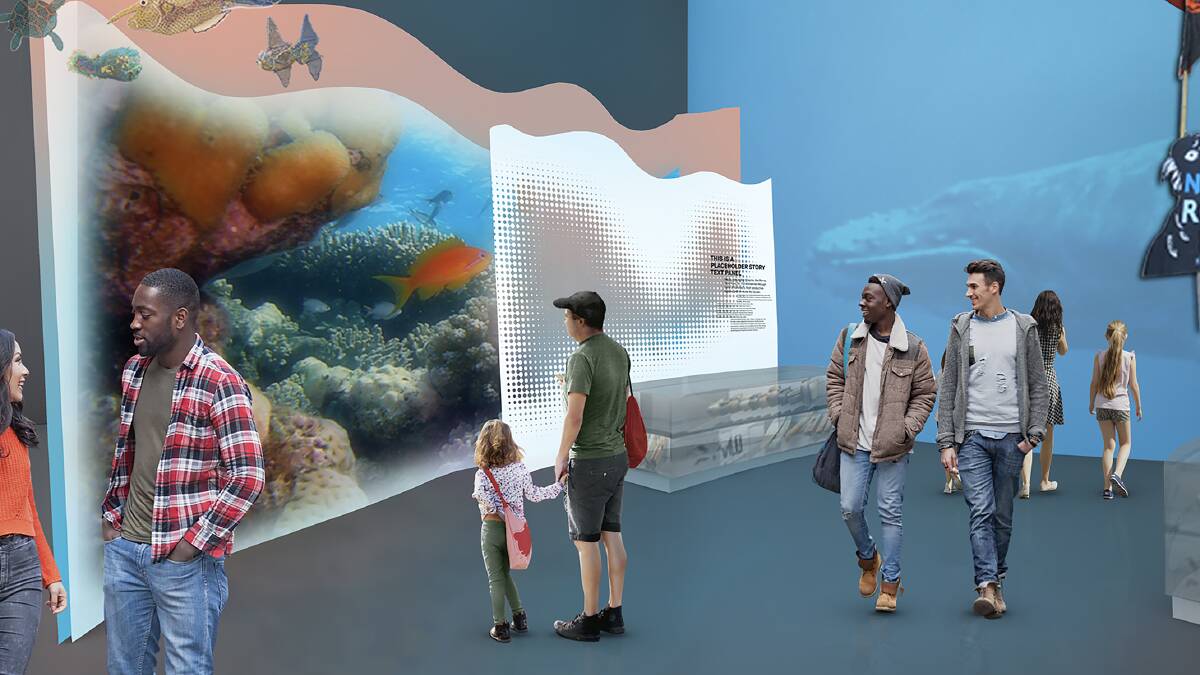A New York design firm is on a mission to bring an "emotional layer" to the National Museum of Australia, as part of a major shake-up of its display space.
Subscribe now for unlimited access.
or signup to continue reading
Local Projects, the company behind the September 11 Memorial in Manhattan and the revamp of Hyde Park Barracks in Sydney, has been commissioned to deliver the museum's new permanent environmental gallery in time for its 20th birthday in 2021.

The new gallery will immerse visitors in the story of the Australian continent, its ancient origins, geological features, unique species, natural forces and the part humans play in the ecosystem, with more than 1,200 unique objects from the museum's collection, many of which have never been displayed before.
The $20.5 million space will be part of a $266 million master plan for the museum's expansion over the next decade.
And if Local Projects do their job right, say two of the people heading up the project, we'll never know they were there.
Billed as an "experience design" studio, Local Projects has designed or revamped dozens of major museums in the United States and Europe.
On a recent trip to Canberra to oversee the start of work on the project, executive account director Brook Anderson and director of content Rebecca Bureau spoke to The Canberra Times about why the company had accepted the museum's brief - one of the largest projects in the company's history.
"I think the key word that we found in the brief was 'emotion'," Mr Anderson said.
"It was the kind of emotional layer that the museum wanted to integrate into their visitor experience, and that's really what Local Projects thrives in, creating very emotive experiences for visitors that are driven by story first and connection to person first."

Ms Bureau said that once the company's vision comes into the place, the interior of the building will be transformed.
"Ideally, the exhibition that we create, the landscapes that we create, will have a visceral and emotional impact on the visitor merely by virtue of them passing through it," she said.
"And there's a cumulative effect there, and one that invites them to pay closer attention, to listen, to feel, to absorb a sense of responsibility for this continent and the lives within it."
She said working with the museum's infamously idiosyncratic building was an opportunity, rather than a hindrance, and that the building itself would play more of an integral role.
"Our first approach was to say that this building is extraordinarily unique, and it makes its own statement, and it behoves us not to fight that, but to let it have its own identity and to build an exhibition within it, pulled away from the walls to allow that architecture to speak on its own," she said.
"Our first design move then was to create exhibition landscapes that have their own integrity. It wasn't fighting that very strong voice the building has, but took advantage of the opportunities where the space grew, where there's double height or triple height, where there are unusual angles, and how does that actually put our exhibition into a better perspective."
Mr Anderson said that museum staff had had a revelation during the initial walk-through, when they saw how much of the building was obscured or underplayed with existing exhibition spaces.
"The team had a real 'aha' moment in having a view shared to see certain architectural features that were kind of hidden because of all the exhibitry and millwork and nuggety content that was there," he said.
"We realised, oh, we should really let the building breathe on its own and be its own experience, and then these landscapes will become these pockets in which you start to understand these larger narratives.
"So that was a huge opportunity for us, this dialogue between the exhibition framework and the architectural framework."
He said Local Projects would know their work was complete when people came away having learnt something about Australia, rather than about the American company working behind the scenes.
"It's almost like we'll know our job is done well if visitors' behaviour has been altered in some way so that they're ultimately coming away by learning, through touching, feeling, acting, whatever they've done, and they've done that without thinking about who put those things into place," he said.
Ms Bureau maintained that coming in as outsiders would be key to their success, especially as they had been treated to a long journey around the north of Australia with the museum's curatorial team.

"We benefited from their eyes and their deep expertise, but also coming to it fresh, from our perspective," she said.
Museum director Mathew Trinca said when it came to selecting an outfit to design the space, going to a well-known firm in New York with no connection to Australia was a no-brainer.
"When you want to do work that's special, you find the very best people you can work with, and you work with them," he said. "What that company has done in recent times, with a number of its projects but particularly the September 11 memorial in New York, has really pushed the boundaries of what a museum and gallery can be, what an exhibition is."
He said was also important, when approaching a redesign of an institution that tells a national story to its own people, to bring in an outside perspective.
"Sometimes, when you try to make sense of yourself, it's better to ask someone outside what they think is going on, who you are," he said.
"A lot of good work comes from a severe case of introspection and self-reflection, but as much comes from a fresh set of eyes looking at a theme or an idea and saying, I actually think it looks like this."
Speaking from his office in Manhattan, Local Projects founder Jake Barton said the company had jumped at the chance to work with the museum. "It really seemed like a dream come true to us because our firm's whole mission as a pro-social organisation is to create things are both meaningful as well as innovative," he said.
"Australia in general, and the National Museum particularly, really has an incredible mixture of what we love, meaning you're very smart, well-informed clients who are able to rise above what most institutions become mired in, which is the anxiety of viewing something that people have done before...
"The name Local Projects is less about the location for our projects and much more about having a unique solution and point of view for each individual project that we bring forward...We've always wanted to develop projects that can help visitors grapple with themselves or with their national identity to create new possibilities and movements."


